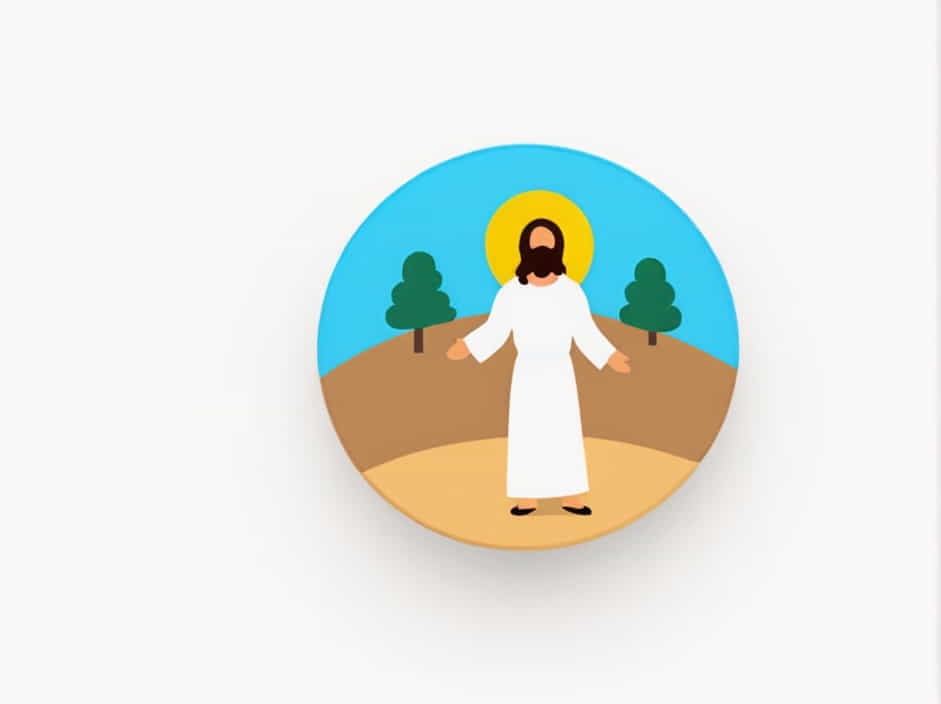The Garden of Gethsemane is one of the most significant locations in the New Testament. It was here that Jesus Christ experienced profound agony before His arrest and crucifixion. The events that took place in this garden are deeply symbolic, showing Jesus’ human vulnerability and divine obedience.
Several key figures were present with Jesus at Gethsemane, and their reactions reveal important lessons about faith, fear, and devotion.
1. What Happened in the Garden of Gethsemane?
A. The Location and Its Significance
The Garden of Gethsemane was an olive grove located at the Mount of Olives, just outside Jerusalem. The name “Gethsemane” means “oil press,” symbolizing pressure and suffering, which aligns with the emotional and spiritual distress Jesus endured there.
This garden was a place where Jesus often prayed, and on the night before His crucifixion, He went there with His disciples to seek strength from God.
B. Jesus’ Prayer and Agony
According to the Gospels of Matthew, Mark, and Luke, Jesus, knowing His arrest and crucifixion were imminent, prayed intensely in Gethsemane.
- He fell to the ground and prayed, saying, “Father, if You are willing, take this cup from Me; yet not My will, but Yours be done” (Luke 22:42).
- He experienced such distress that His sweat became like drops of blood (Luke 22:44).
This moment highlights Jesus’ humanity, as He faced overwhelming sorrow and fear, yet fully submitted to God’s will.
2. Who Was With Jesus in the Garden of Gethsemane?
A. Peter, James, and John – The Inner Circle
Among the twelve disciples, Jesus took only three-Peter, James, and John-further into the garden with Him.
These three had a special relationship with Jesus and had previously witnessed significant events, such as:
- The Transfiguration (Matthew 17:1-9).
- The raising of Jairus’ daughter (Mark 5:37-43).
Despite their closeness to Jesus, they failed to stay awake and pray with Him. Three times, Jesus found them asleep, saying:
“Could you not watch with Me one hour? Watch and pray so that you will not fall into temptation” (Matthew 26:40-41).
Their drowsiness reflects human weakness, even in moments of great spiritual significance.
B. The Other Disciples
The remaining eight disciples stayed at the entrance of the garden. The Bible does not record any specific actions from them during this time, but they were likely resting while Jesus prayed.
This division among the disciples suggests a lesson about spiritual readiness-some were closer to Jesus in His suffering, while others remained further away, possibly unaware of the gravity of the moment.
C. Judas Iscariot – The Betrayer
One of the most infamous figures present at Gethsemane was Judas Iscariot, the disciple who betrayed Jesus.
After leaving the Last Supper, Judas arrived at the garden, leading a group of soldiers and officials from the chief priests and Pharisees. He identified Jesus with a kiss, signaling to the authorities whom to arrest (Matthew 26:48-49).
His betrayal fulfilled the prophecy in Psalm 41:9:
“Even my close friend, someone I trusted, one who shared my bread, has turned against me.”
Judas’ presence in Gethsemane marks a turning point in Jesus’ journey to the cross.
3. The Arrest of Jesus
A. The Arrival of the Soldiers
A large crowd, armed with swords and clubs, came to arrest Jesus (Matthew 26:47). This group likely included:
- Roman soldiers
- Temple guards
- Religious leaders
Jesus, knowing all that was about to happen, did not resist but willingly surrendered to fulfill God’s plan.
B. Peter’s Attempt to Fight
In a moment of impulsive loyalty, Peter drew his sword and cut off the ear of Malchus, a servant of the high priest (John 18:10).
Jesus rebuked Peter, saying:
“Put your sword back in its place, for all who draw the sword will die by the sword” (Matthew 26:52).
He then healed Malchus’ ear, showing His divine mercy even in the face of betrayal (Luke 22:51).
C. The Disciples Flee
After Jesus was arrested, all His disciples deserted Him and fled (Mark 14:50). Their fear overwhelmed their faith, leaving Jesus to face His suffering alone.
This moment fulfills another prophecy from Zechariah 13:7:
“Strike the shepherd, and the sheep will be scattered.”
4. Lessons from Gethsemane
The events in the Garden of Gethsemane hold powerful lessons for believers today.
A. The Importance of Prayer
Jesus emphasized prayer as a source of strength. He urged His disciples to watch and pray, yet they failed to remain spiritually alert.
For believers today, Gethsemane serves as a reminder to remain vigilant in faith, especially in times of trial.
B. Trusting God’s Will
Jesus, though deeply distressed, submitted fully to God’s plan. His words, “Not My will, but Yours be done”, teach the importance of trusting God, even when circumstances are difficult.
C. Human Weakness vs. Divine Strength
The disciples’ actions-falling asleep, reacting impulsively, and fleeing-demonstrate human weakness. In contrast, Jesus’ calm surrender to arrest shows divine strength and faithfulness.
D. Mercy in the Face of Betrayal
Despite Judas’ betrayal and Peter’s violence, Jesus responded with forgiveness and healing. His actions show the depth of His grace and love, even for those who opposed Him.
The Garden of Gethsemane was a place of great spiritual struggle, yet it also demonstrated Jesus’ unwavering obedience to God’s will.
Those who were with Him-Peter, James, John, the other disciples, Judas, and the soldiers-each played a role that teaches valuable lessons about faith, weakness, betrayal, and redemption.
For believers today, Gethsemane serves as a powerful reminder to:
- Stay vigilant in prayer.
- Trust God’s plan.
- Acknowledge human weakness but rely on divine strength.
- Extend grace and mercy, even in moments of hardship.
This moment in Jesus’ life set the stage for His sacrifice on the cross, where He would ultimately fulfill His mission of salvation for humanity.
